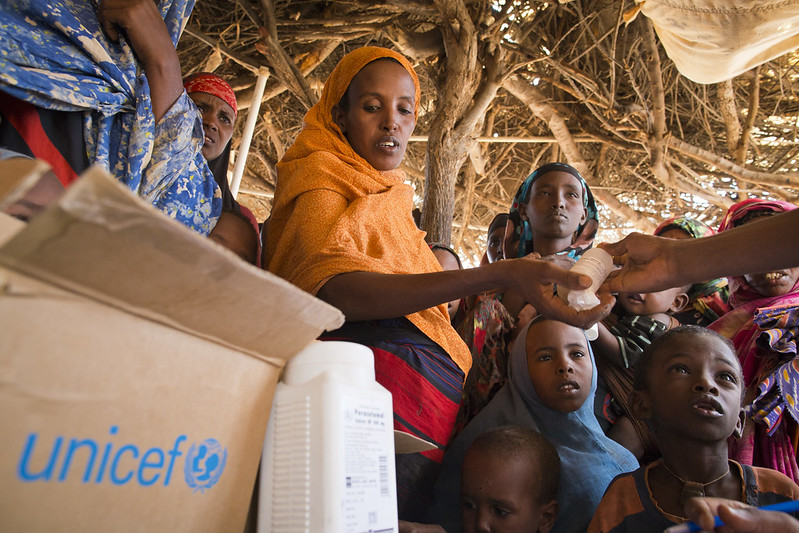Health Initiatives and Diseases in Somalia
 For a long period, Somalia has been a vulnerable target for many infectious diseases. Some of the leading factors can be attributed to the humanitarian crises of malnutrition, mass displacement and lack of access to clean water and food, as well as the several years of drought that started in 2015. With that said, here are three diseases in Somalia and the initiatives combating them.
For a long period, Somalia has been a vulnerable target for many infectious diseases. Some of the leading factors can be attributed to the humanitarian crises of malnutrition, mass displacement and lack of access to clean water and food, as well as the several years of drought that started in 2015. With that said, here are three diseases in Somalia and the initiatives combating them.
Cholera
Cholera is a bacterial disease transmitted through contaminated water and food sources, posing a risk of mortality if left untreated. In 2024, there was another cholera outbreak after the flooding of El Niño rains. According to the International Rescue Committee (IRC), 980 cases were reported in the first two weeks of January, with 55% of them being children. The number of reported cases has been increasing for the past few years. The year 2023 experienced a 15% increase from the previous year, while there was a 48% increase in 2024 compared to the same period in 2023.
As of May 27, 2024, there were more than 10,000 cases and 120 deaths across the country since January. The outbreak also destroyed farmlands, which worsened the poverty and malnutrition among families across Somalia. As with other humanitarian crises, the cholera outbreak affected the vulnerable groups the most, adding to their instability with a lack of sanitation facilities, medical treatment and food.
As a response to address the public cholera crisis in Somalia, the National Cholera Task Force has been activated and the IRC has stepped up. The IRC has made an effort to mitigate the impact of the cholera outbreak by providing humanitarian aid such as clean drinking water and proper sanitation materials to affected populations. The Central Emergency Response Fund (CERF) also allocated $2 million to the cholera outbreak in Somalia.
Measles
Measles is a contagious disease with symptoms such as high fever and rash and it carries a risk of potential death. In Somalia, measles is prevalent, with cases reported annually. As of February 2024, there have been 3,365 reported cases and 37 deaths since the beginning of the year. This significant rise is due to limited access to health care services, medical supplies, proper sanitation, safe water and lowered immunity due to acute malnutrition. The risk is further aggravated among vulnerable communities due to low vaccination rates, widespread malnutrition and vitamin A deficiency among children younger than 5 years old.
Amid the measles crisis, the World Health Organization (WHO) responded by providing technical support on surveillance, vaccination, case management, training of health care workers and risk communication. In addition, in the last week of April 2024, Somalia’s Federal Ministry of Health, the WHO and the United Nations Children’s Fund (UNICEF) partnered to increase the immunization rate among children in Somalia.
Past initiatives include administering 933,000 vaccinations in January of 2018 through a campaign partnered with WHO, UNICEF and national and local health authorities. UNICEF also provided 4.7 million doses of vaccines and 1,700 social mobilizers to facilitate the vaccination programs with vitamin A supplementation.
Tuberculosis
Tuberculosis (TB) is another public health problem in Somalia. TB is a serious infectious disease caused by Mycobacterium tuberculosis that affects the lungs. In 2023, there were 246 TB cases per 100,000 population in Somalia. According to WHO, some of the factors related to TB transmission and progression are crowded and poorly ventilated living environments, undernutrition and limited general health knowledge. In other words, poverty correlates with TB cases, increasing the vulnerability of Somalia’s population.
In March of 2024, WHO Somalia, jointly with the Federal Ministry of Health and Human Services, marked World TB Day 2024 with continuous reinvigorated determination to end the TB epidemic. Since 1995, Somalia’s TB program has made significant progress in controlling the TB epidemic in Somalia. The program is based on WHO’s End TB Strategy, adopting WHO’s diagnostic and treatment regimens.
In 2023, TB cases decreased by 14% compared to 2010. Additionally, the number of TB treatment centers increased from seven in 1995 to 109 in 2023. The program saved 184,052 lives with TB cases from 2010 to 2023, with an average treatment success rate of 87%. With a renewed commitment to combat the TB epidemic, Somalia will continue to control TB and save the lives of its people.
Conclusion
Cholera, Measles and Tuberculosis are three of many diseases in Somalia, affecting thousands of people’s lives. With the increase in outbreak cases, there is also an active effort to mitigate the impact of diseases. According to Minister of Health Dr Ali Haji Adam Abubakar, the introduction of new vaccines, including Rotavirus and Pneumococcal Conjugate Vaccines, is also expected to help Somalia combat other diseases that are taking the lives of many children.
Despite ongoing instability and disease outbreaks, with collective and concerted effort, Somalia would be able to keep diseases affecting the population under control and save the lives of Somali citizens.
– Sein Kim
Sein is based in Bellevue, WA, USA and focuses on Good News for The Borgen Project.
Photo: Flickr
